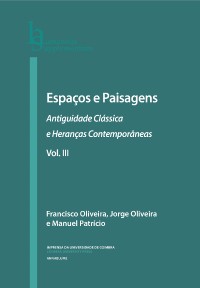Please use this identifier to cite or link to this item:
https://hdl.handle.net/10316.2/31560| DC Field | Value | Language |
|---|---|---|
| dc.contributor.author | Soares, Lina Maria | |
| dc.date.accessioned | 2014-06-24T10:02:12Z | |
| dc.date.accessioned | 2020-09-21T02:25:56Z | - |
| dc.date.available | 2014-06-24T10:02:12Z | |
| dc.date.available | 2020-09-21T02:25:56Z | - |
| dc.date.issued | 2012 | - |
| dc.identifier.isbn | 978-989-26-0292-9 (PDF) | |
| dc.identifier.uri | https://hdl.handle.net/10316.2/31560 | - |
| dc.description.abstract | When the Romans conquered Lusitania they divided it into conventi iuridici, one of them being conventus scallabitanus, where Scallabis was the name given to the territory which today is the municipality of Santarém. Under Visigoth rule, the worship of a martyr – Iria or Irene – changed the name of the town to Chantirene, a name which the Moors maintained (Xantarin) and when the Charter was given to the municipality in 1179, King Afonso I had the following written: ego Alfonsus (...) per uigili astucia mei et meorum hominum opidum sanctaren sarracenis abstuli. What reasons would have had these peoples to covet this territory? The place of bloody fights that required so much effort from the first Portuguese king, it was only thanks to his cunningness and that of his men that he was able to permanently reconquer this territory. Could it be because of the fields rich in crops and pastures, fertilized by the floods of the Tejo, like the River Nile or because of the legends and mysteries that have led poets and chroniclers, throughout the centuries, to describe this territory as a place of delights? | eng |
| dc.language.iso | por | - |
| dc.publisher | Imprensa da Universidade de Coimbra | por |
| dc.publisher | Associação Portuguesa de Estudos Clássicos | por |
| dc.publisher | Centro de Estudos Clássicos e Humanísticos | por |
| dc.relation.ispartof | http://hdl.handle.net/10316.2/2376 | por |
| dc.rights | open access | - |
| dc.subject | Abidis | eng |
| dc.subject | Cult | eng |
| dc.subject | Iria | eng |
| dc.subject | Santarem | eng |
| dc.subject | Ábidis | por |
| dc.subject | Culto | por |
| dc.subject | Iria | por |
| dc.subject | Santarém | por |
| dc.title | Da Scallabis romana a Sanctaren medieval: espaço, gentes e lendas | por |
| dc.type | bookPart | por |
| uc.publication.firstPage | 211 | - |
| uc.publication.lastPage | 216 | - |
| uc.publication.location | Coimbra | por |
| dc.identifier.doi | 10.14195/978-989-8281-69-2_17 | - |
| uc.publication.digCollection | PB | por |
| uc.publication.orderno | 17 | - |
| uc.publication.area | Artes e Humanidades | por |
| uc.publication.bookTitle | Espaços e paisagens: antiguidade clássica e heranças contemporâneas: Vol.3 História, Arqueologia e Arte | - |
| uc.publication.manifest | https://dl.uc.pt/json/iiif/10316.2/31560/227253/manifest?manifest=/json/iiif/10316.2/31560/227253/manifest | - |
| uc.publication.thumbnail | https://dl.uc.pt/retrieve/11421521 | - |
| uc.publication.parentItemId | 52059 | - |
| uc.itemId | 73596 | - |
| item.grantfulltext | open | - |
| item.fulltext | With Fulltext | - |
| Appears in Collections: | Espaços e paisagens: antiguidade clássica e heranças contemporâneas: Vol.3 História, Arqueologia e Arte | |
Files in This Item:
| File | Description | Size | Format | |
|---|---|---|---|---|
| 17-_espa_os_e_paisagens.pdf | 222.37 kB | Adobe PDF |  |
Items in DSpace are protected by copyright, with all rights reserved, unless otherwise indicated.
